|
The Updraught oven
This is the basic type of oven. It consists of an inner chamber
with a domed roof - in which the ware is placed- enclosed within
a HOVEL.
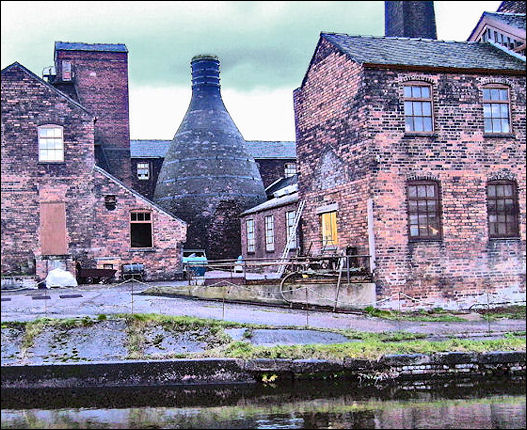
Updraught oven at the
Middleport Pottery
FLUES and BAGS lead from the FIREMOUTHS to the centre of the oven,
and conduct heat to the wares inside.
The heat rises up through the contents of the oven (the SETTING)
and out through the top. This type of oven is used for firing
both BISCUIT and GLOST ware.

The Down draught Oven
This type of oven which uses heat more efficiently than the UPDRAUGHT
oven was developed in the early 20th century. It is similar in
shape to the UPDRAUGHT oven, but the draught is controlled in
such a way that the heat first rises and then is forced downwards
again through the SETTING and out through holes in the base of
the oven. The hot smoke is then sucked up through a straight chimney
nearby which serves one or more neighbouring ovens.
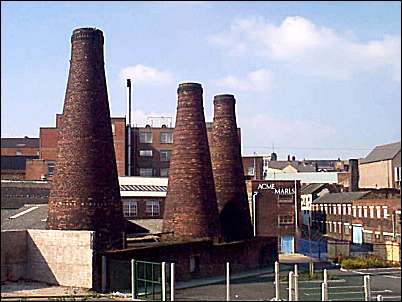
The kilns of Acme Marls,
Burslem, are the only
remaining downdraught type of potters ovens
This type of oven is used for both BISCUIT and GLOST ware.

The Muffle or Enamel Kiln
A MUFFLE kiln is very much smaller than the other types of oven
and is used to fire decorated ware. Decorated wares are fired
in order to make their colours permanent as, without firing, these
can be washed or rubbed off.
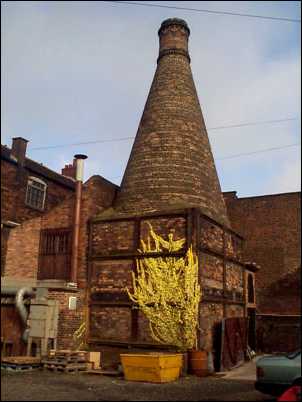
Bottle oven in Chelsea Works,
Moorland Pottery, Burslem
muffle kiln with circular hovel built c1910
A MUFFLE kiln does not require a temperature as high as that used
for BISCUIT or GLOST ware. The flames do not enter the firing
chamber, instead the oven is heated by means of encircling flues.
In this way the delicate colours are protected.

The Calcining Kiln
There is no particular reason a CALCINING KILN should be bottle
shaped, since it is used not to fire pottery, but to prepare the
flint and animal bones which are added to clay to make up the
material from which pottery is made. This material is called the
BODY.
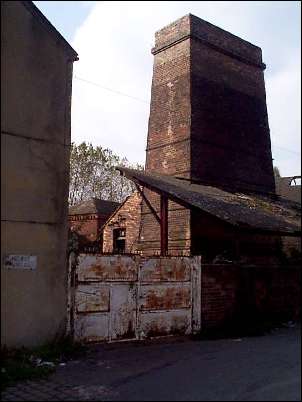
Rectangular calcining kilns at Pidduck
Street, Middleport.
Before the flint or animal bones can be added to the BODY, they
have to be crushed to a fine powder. If they are burnt or CALCINED,
they become brittle and can be powdered with ease.
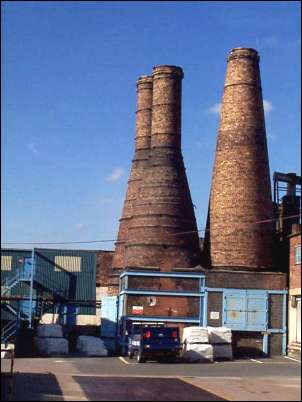
Calcining kilns at one of Bakers Works in
Fenton
(now occupied by James Kent)
 |

